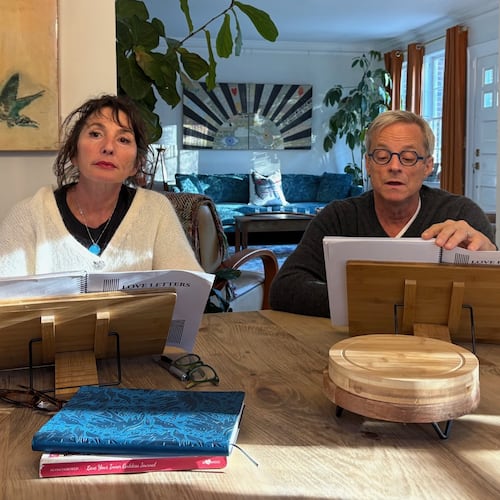On Oct. 19, 1973, one of my favorite movies was released.
Fifty years ago, audiences were treated to the screen adaptation of “The Way We Were,” directed by Sydney Pollack.
I didn’t see the film the first time around, but the movie aged well enough for me to fall in love with it more than a decade later when I was a teen.
As star-crossed lovers, Barbra Streisand and Robert Redford guide viewers through decades of American life, beginning at an elite university pre-World War II and ending on a New York street corner during the “ban the bomb” days of the 1960s. Their romance was ultimately a casualty of their differences. Streisand’s Katie Morosky was antiwar, while Redford’s Hubbell Gardiner was apolitical.
The film is being re-released twice for its golden anniversary – one is the original 118-minute movie, the other is a 123-minute extended version. The latter includes two scenes that Streisand held on to for decades in the hopes that the moment would come to restore content that she felt never should have been cut.
At the time, the film was going over budget. The story dealt with politics. And studio heads feared audiences would be bored.
Today, the idea that an extra five minutes of footage would cause such concern is almost laughable.
Movies are running longer than they ever have, and, in some cases, way longer than they ever should. Average run times of the biggest films are 15 to 20 minutes longer than they were in the mid-90s, according to data from Chartr.
Last year’s most spectacular flop, “Babylon,” was just over three hours. The 2023 live action remake of “The Little Mermaid” was almost an hour longer than the animated original. “Oppenheimer” was three hours. Martin Scorsese’s latest movie, “Killers of the Flower Moon,” which will hit theaters this weekend, clocks in at an epic three hours and 26 minutes.
Scorsese, in an interview with Deadline, told audiences: “Make a commitment. Your life might be enriched.”
I don’t dislike long movies. But the fact that viewing a movie at the theater can be a half-day excursion feels ... daunting. For that kind of commitment, whatever I’m viewing needs to feel as life changing as Scorsese intimates. But not every movie edging past the three-hour mark is enriching lives. And, even if they are, perhaps movies that long are better viewed from the comfort of home.
I took my daughter to see “Avatar: Way of the Water “ last year. I was late to the Avatar franchise. But, after streaming the original, I was looking forward to the sequel.
Between two-bathroom breaks (one for each of us) and a 10-to-12-minute nap during a slow scene (me only), I missed about 20 minutes of the 3-hour-and-12-minute film, which is 30 minutes longer than the 2009 debut.
What did I miss? I don’t know. Whatever it was, it didn’t matter much.
Director James Cameron, when asked about the film’s length, suggested anyone who misses part of the movie should just go see it again. Hard pass, Mr. Cameron. I think I’ll be watching the next release of the franchise from home.
For more insight into this movie length madness, I checked in with people who know the inner workings of the industry.
Fran Burst, an Atlanta based filmmaker, likes longer movies. “If I am going to a theater, I am going to have an experience,” she said.
While a movie can be long or short, what matters most is that it is good.
Burst’s feature length film, “The 12 Lives of Sissy Carlyle,” was filmed on a shoestring budget, with a digital camera over almost seven years. The run time is about 75 minutes. That meant giving up a lot of material, but Burst thinks it is just the right length.
Every filmmaker, even those without studio backing, needs to be asking a central question, she said, “Who is going to watch this movie, and why?”
Sometimes, when the filmmaker is a big name, no one really wants to ask that question.
There is a premium put on working with prestige directors.
“If you get Scorsese … you may as well let him make a film as long as he wants to get his name on it,” said Ethan Tussey, associate professor of film and media studies at Georgia State University.
Tussey shared a few other theories about why movies are getting longer.
With the shift to movie streaming, length is less of an issue. Streaming services measure the value of content in minutes of engagement. The longer subscribers stay on the platform, the better.
For distributors, longer running times mean fewer showings and more packed theaters.
Tussey, who has young kids, finds longer films to be a challenge. “I get very excited when I see that a movie is 90 minutes. I can finish it,” he said.
I didn’t have the chance to see “The Way We Were” in the theater. But, for me, that would have been life enriching. I learned more about the impact of World War II era politics on American lives from that film than I did from reading a textbook.
If it returned to theaters today, I would go see it in a heartbeat. Even with an extra five minutes.
Read more on the Real Life blog (www.ajc.com/opinion/real-life-blog/) and find Nedra on Facebook (www.facebook.com/AJCRealLifeColumn) and Twitter (@nrhoneajc) or email her at nedra.rhone@ajc.com.
About the Author
Keep Reading
The Latest
Featured



